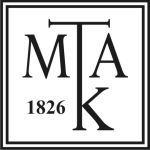Az 1939 és 1945 közötti Szlovák Köztársaság államfői tisztsége
DOI:
https://doi.org/10.15170/Dike.2021.05.02.06%20Kulcsszavak:
constitution, continuity, political system, president, World War II, SlovakiaAbsztrakt
The paper deals with the constitutional development of the independent Slovakia between 1939 and 1945. It focuses on the position of the president in the context of the Czechoslovak constitutional tradition and authoritarian challanges, which were typical from the end of the 1930’s. The problem of continuity and discontinuity of the state and law is also an important part of the paper. The Slovak constitution was adopted in 1939. The influence of the Southern-European fascist and authoritarian models were strong during the process of constitution-making, but the Czechoslovak constitution of 1920 also had an impact on the legislator. Although the president of Slovakia, Jozef Tiso arrived from the Slovak Catholic and autonomist movement, he became the symbol of pro-Nazi collaboration during the second world war. Tiso had two positions – he was the Slovak president and paralelly the leader of the Hlinka Slovak People Party, which was a dominant political factor in Slovakia. A special act regulated the position of this party and its leader in the constitutional and political system.
Downloads
Megjelent
Hogyan kell idézni
Folyóirat szám
Rovat
License
Open Access politika: A folyóirat nyílt és korlátlan hozzáférést biztosít a tartalmához. Bárki jogosult a közzétett tartalmak letöltésére, felhasználására, nyomtatására, terjesztésére és/vagy másolására a nemzetközileg elfogadott tudományetikai normáknak megfelelően.
A folyóirat (Kiadó) szabadon elérhetővé és letölthetővé teszi a cikkeket saját hivatalos, kiadói honlapján, időbeli korlátozás nélkül. A cikk első közzétételének joga kizárólagosan a Kiadót illeti. A Szerző elfogadja, hogy a Kiadó a cikket oly módon teszi közzé, hogy a cikk felhasználási jogaira bármely harmadik fél számára az első közzétételt követően a Creative Commons Attribution-NonCommercial-SharAlike 4.0 (CC-BY-NC-SA 4.0) licenc feltételek az irányadók. A Kiadó e licensz keretében átalakíthatja a cikket tetszőleges elektronikus formátumba, a cikket számítógéppel vagy elektronikus adathordozóra másolhatja. A Kiadó a cikk közlési és felhasználási jogát megoszthatja bármely harmadik féllel, illetőleg e jogokat bármely harmadik féllel közösen gyakorolhatja. A Kiadó a Szerző nevében felléphet a cikkel kapcsolatos jogsértések, jogtalan felhasználás és szellemi tulajdon sérelmét jelentő magatartások esetén. Gyakorolhatja mindazon jogokat, amelyeket a fent megjelölt „CC BY NC SA 4.0” licenc feltételek lehetővé tesznek harmadik felek számára.










